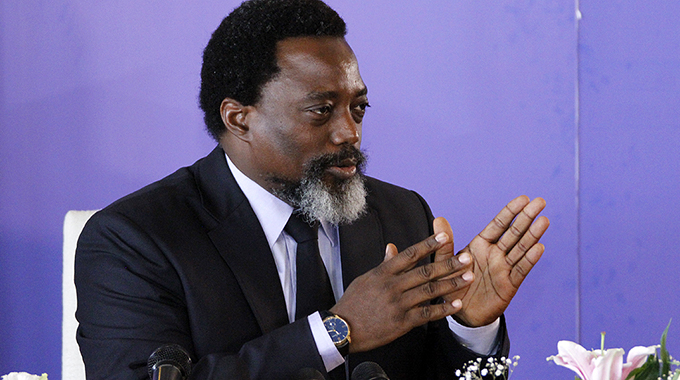Technology: A game changer in HIV response

Mirirai Nsingo
“This new technology has been a game changer in our response to HIV and the treatment strategies. Since HIV was first discovered in the country more than three decades ago, I feel we are winning the battle through sustainable programmes, clinical acumen and the use of advanced technology to monitor patients,” said the medical officer in charge of diagnostic services at Collin Saunders Hospital, Triangle, Dr Brian Ziki.
Lying some 120km to the south-east of Masvingo, the Tongaat Hulett-run health institution is among Zimbabwe’s 25 resource-constrained district hospitals that have benefited from at least 100 Samba II point of care machines under a Government decentralisation initiative launched early this year
During a visit to the hospital by Saturday Herald Lifestyle recently, Dr Ziki noted that new technology in the form of SAMBA II machines, used for viral load testing and Early Infant Diagnosis (EID) was indeed changing the face of HIV in the low-veld and in Zimbabwe as a whole.
“The use of this new technology has resulted in improved treatment outcomes, survival of individuals, and prevention of HIV transmission itself,” added Dr Ziki who said technology was indeed changing the face of HIV in Zimbabwe through enhancement of patient care.
Manufactured by Diagnostics for the Real World (DRW), a spin-out company from Cambridge University and funded by the Global Fund, the Samba II machines are specifically developed for resource limited settings.
The new technology that received the 2016 European Patent Office Award for inventiveness has been applauded by clinicians for being simple to use, robust and heat stable hence can be used at the point of care where patients are seen. They, thus replace the big conventional machines used previously.
Dr Ziki asserted that besides improving the turnaround time (time taken to come back with results) for viral load tests results, the Samba II machines have enhanced quality of care to patients and he is optimistic this will result in improved quality of life for people living with HIV.
“Before the introduction of point of care machines, initially we used to send viral load specimens to Mutare Provincial Hospital and it would take up to 8 weeks or more to get results and then after the Government decentralisation we started sending samples to Masvingo Provincial Hospital but still it would take about 4 weeks to get results.
“Talk of anxiety and delayed management of patients as we waited for results!
“The machines have changed the game; they are allowing us to offer services at the point-of-care as patients get results within hours. So in a wholesome way it has improved care of patients in every sense as it is now literally by the bed side, helping us come up with timely interventions and management of patients according to viral load results,” he added.
The medical officer-cum-medical laboratory scientist added that the new technology had enhanced the quality of care patients are getting and he is happy that it has helped the institution keep most of its patients on first line treatment.
“The quick turnaround means that the quality of care has improved in every sense. This has helped us come up with timely interventions to manage patients according to viral load results.
“It has helped us keep most patients on first line treatment through enhanced monitoring and counselling in cases where a patient has been failing clinically. We are not rushing into switching patients to second line treatment before adequate assessment. We have realised that some of the clinical failures were to do with issues of adherence or safe sex practices hence we are taking time to counsel patients.
“We are dealing with the patients and addressing issues to do with adherence, need to speak to people and hear out their challenges before switching drugs. Issues of safe sex practices have also helped, it has helped us improve counselling,” he said.
A medical laboratory technician at the institution, Ernest Mutangamberi concurred that the new technology was indeed a game changer in HIV response adding that it had made work easier for them.
“Imagine previously when we had to wait for more than four weeks or more before we could get viral load results and because we were sending them to Masvingo, there was always that risk of losing some samples. That meant the tests had to be done all over again, and that meant delayed interventions to patients. Sometimes we lost patients as we waited for results.
“Now I’m glad that patients are now getting their results within hours. We carry out about 30 viral load tests each day and 150 per week. The four machines that we have are already stretched and it would help if we could get more machines as a district that could really help.
Mutangamberi said the Samba II machines have helped them in doing routine testing and offer necessary interventions in a timely manner adding that Government should actually distribute more machines across Zimbabwe’s districts to meet the high demand of samples coming from clinics as a result of successful HIV management.
He said a reading of less than 1 000 copies indicate the person is responding well to treatment while a reading of more than 1 000 copies means the person is not responding well to anti-retroviral drugs and might need to be counselled, retested and ultimately switched to another drug regimen.
Dr Ziki further added that the coming in of the Samba II machines will help the country achieve the third 90 target of having 90 percent of all people receiving anti-retroviral therapy having viral suppression.
Zimbabwe also adopted the 90-90-90 United Nation Aids Programme ambitious targets that seeks by 2020, to have 90 percent of all people living with HIV knowing their HIV status, 90 percent of all people diagnosed with HIV receiving sustained anti-retroviral therapy, 90 percent of all people receiving anti-retroviral therapy having viral suppression.
“On the third 90 we are now at 85 percent and this increase is a result of the introduction of the point of care machine. On the first 90 we are at 90 percent while on the second 90 we are at 98 percent and I’m optimistic that we will achieve or surpass the 90 percent on the third 90 soon,” he said.
On managing vertical transmission of HIV to an unborn baby, Dr Ziki said they were prioritising viral load check on pregnant mothers to reduce infection.
“A pregnant woman’s viral load check is important. Good viral suppression can help reduce transmission to the unborn baby and the point of care machines have helped us do more viral load testing on pregnant women.
“Our transmission rate has gone down significantly. In the last batches that were done, no baby was born positive and this has been achieved by enhanced viral load monitoring.
“We are however, not yet doing early infant diagnosis as we had hoped but we look forward to do that so we can help reduce anxiety on mothers while enabling timely intervention. Initially we hoped to use them for early infant diagnosis but viral load overtook everything but we hope with Government assistance, reagents will be sourced soon,” he said.
Director for laboratory services in the Ministry of Health and Child Care Douglas Mangwanya said decentralisation of viral load testing has impacted positively on HIV treatment outcomes.
He said previously, with the centralised system, the number of people living with HIV who accessed viral load testing stood at 15 percent but has now gone up to 70 percent.
While the convectional machines required air conditioning and specialised personnel, Mangwanya said the Samba II were made for resource constrained settings and are more reliable, simple, robust, quality-assured and relatively rapid point-of-care molecular diagnostic platform.
Mangwanya added that because of this success, Government is now looking forward to go into the second phase of this decentralisation targeting more district hospitals in the country.
He noted that they are working on expanding early infant diagnoses to all district hospitals currently offering viral load testing.
“The National Aids Council is working on procurement of the reagents for early infant diagnoses and once these are available, delays encountered in diagnosing exposed babies would be a thing of the past.”
Zimbabwe is among the first countries in the world to use Samba II point-of-care technology for viral load tests and Early Infant Diagnosis of HIV and Dr Ziki believes this new technology is among best interventions to ever happen since the virus was discovered and a necessary intervention in the fight and march towards the ambitious 90-90-90 goal.







Comments